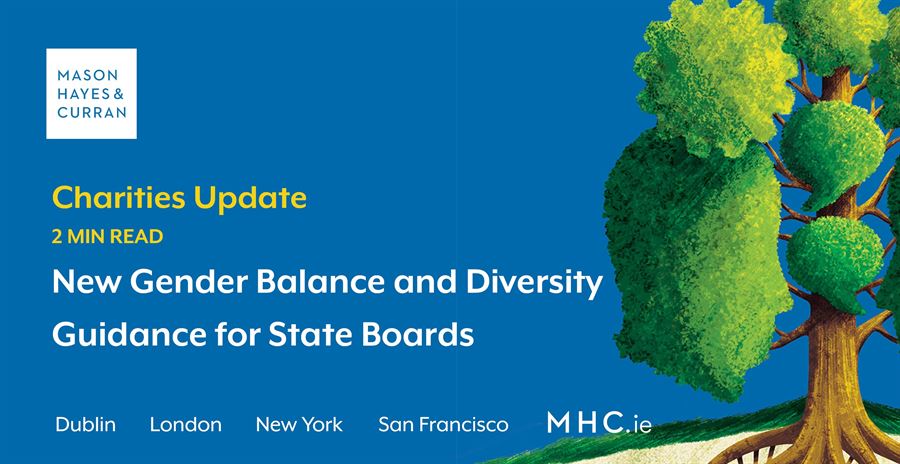
An Annex recently published by the Department of Public Expenditure and Reform (DPER) is intended to supplement the existing 2016 Code of Practice for the Governance of State Bodies (the 2016 Code). It was introduced on foot of the recommendations outlined in the 2019 “Report of the Inter-Departmental Group on Gender Balance on State Boards” which found that further work was required to improve on gender balance in the composition of boards of State bodies.
The main aim and purpose of the Annex is to enhance governance and improve diversity within boards of State bodies. All State bodies should make themselves aware of the changes. The Annex will also be of interest to voluntary hospitals and healthcare agencies which are “section 38 agencies” and which are required by the Health Service Executive to use the 2016 Code as a guide when drawing up internal codes of governance.
Key Measures
The Annex includes the following changes to the 2016 Code in order to achieve greater diversity and gender inclusivity:
-
Board terms have been reduced to a recommended maximum of eight years. Ministerial approval is required if it is decided that a board member should serve over eight years on a board
-
The board of every State body must report annually on the gender balance of appointments to that board during the previous year, where the board stands on the 40% gender balance requirement and the board’s approach to the promotion of diversity and inclusion
-
Ministers are to be informed of the current gender balance on the boards of State bodies at the time of considering appointments and re-appointments
-
The annual evaluation process of each State board should be expanded to analyse gender, diversity and skills mix and to critically analyse why gender balance has not been achieved in board membership. A model self-assessment questionnaire is included in the Annex, and
-
The annual report of each State board should include an account of the approach being adopted for diversity and inclusion, including with regard to gender. Any progress and achievements should be outlined
Speaking about the measures, Minister Michael McGrath said, “Ireland is making good progress at achieving gender balance on State boards, but the progress is uneven and is far from complete. We need to do more.” The Minister also stated it is vital to have a range of experiences, perspectives and skillsets on State boards to strengthen board independence and reduce the likelihood of “groupthink”.
What are the next steps?
The reporting requirements mandated within the Annex impose obligations on the boards of State bodies to critically assess their evaluation processes relating to the promotion of equality, diversity and inclusivity.
Conclusion
As outlined by the Minister, whilst progress has taken place, it has not been at a consistent pace and it is hoped the new measures will prompt further inclusivity. For State bodies and, to a certain extent, section 38 agencies, this newly published Annex may be the ideal push to consider board composition and the maximisation of diversity on their boards.
For more information on the scope of the Annex and its recommendations, contact a member of our Charities & Not-for-Profit team.
The content of this article is provided for information purposes only and does not constitute legal or other advice.
Share this:




